Ever since I attended a workshop on plant dyeing in July, I have been fascinated by natural dyeing and actually had a great desire to collect some dyeing plants to experiment with in winter. Unfortunately, the summer went by too fast and I missed collecting the plants. Hopefully, in spring I will remember to seed one or two suitable plants in the garden.
This fact made me even happier, when I discovered that Elke Fiebig from still garments offered a workshop on dyeing with avocado pits as part of the MAKE SMTHNG week. You were supposed to bring a light-coloured pre-washed garment with you, preferably made of cotton or an other natural material. Of course you should bring along an avocado pit as well.
I decided to dye a cheesecloth and make a scarf out of it. For me, as I mainly wear black, a daring idea…
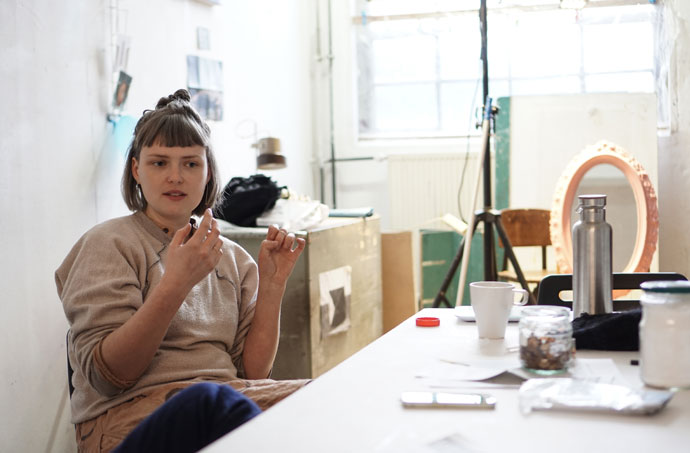
So I started out equipped with fabric and avocado pits. Elke had already prepared the room and equipped it with two large kettles. These were filled with warm water and dye extracted from avocado pits. Apart from me there were about 10 other participants who had brought along different clothes. Elke told us a lot about dyeing, materials and mordanting. Then we got started.
First we moistened our fabric with water and then put it into the dye. Every 10 minutes one of the participants stirred up the bath. In between we had time to talk to each other, to visit the other stations of the event, to buy a cup of coffee or a tasty dish made of rescued food for a small donation.
After an hour we removed our fabrics from the bath, squeezed them and left them to dry later at home. My scarf turned out beautiful. I just have to seam it and then I’ll dress up to show you. The great thing about dyeing with avocado is that you can easily do it at home as well. Because of tannins in the pits this dye doesn’t require a pre-mordant, but note that your colours will be rather light in that case. If you would like to try it for yourself, here are some informations…
Dyeing with avocado pits – this is how it’s done
Ingredients
- We had about 150 g dried avocado pits for 100 g of fabric, but you can start with fewer.
- White or unbleached fabric made of natural material such as cotton or linen (silk or wool can also be dyed, but make sure not to boil these!)
- Large pot with a capacity of 15-20 litres.
- Rod or spoon for stirrin.
Preparation
For the color:
- At the best, crush and dry avocado pits right after using them, or use fresh ones.
- Put the chopped avocado pits and about one litre of water into a lidded pot, bring it to a boil and let it simmer for about one hour on low temperature.
- Leave the seeds in the water and repeat the boiling process several times during the week, if your time allows. Add water if lots of steam evaporates.
- Usually there is quite a lot of dye in avocado pits and repeating the extraction helps for stronger colours.
Preparing the fabric:
- Pre-wash new fabric as hot as possible in the machine to remove any coatings or residues.
- Moisten the fabric or garment with water before dyeing.
Preparing the dye bath:
- Add enough water to your pot to fit your fabric nicely.
- Add your dye.
Dyeing the fabric:
- Carefully place the damp cloth in the dye vat, gently bring the temperature below boiling (or lower, if you dye silk and wool).
- Stir approximately every 10 minutes so that the dye can enter into all folds of the fabric. Watch out for air pockets which will cause uneven dye results.
- Elke recommends to dye for at least one hour (and only start your timer once the dye vat is at your desired temperature). After one hour remove the fabric from the bath, allow it to cool a little and wring it out.
- If you’re patient, dry fabric before rinsing.
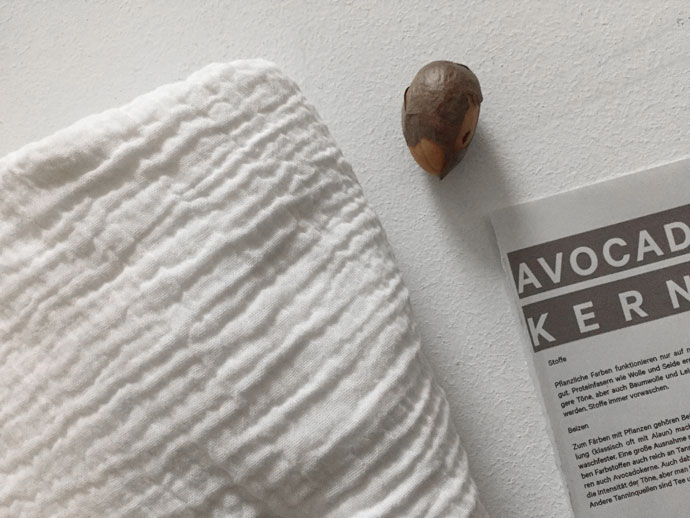
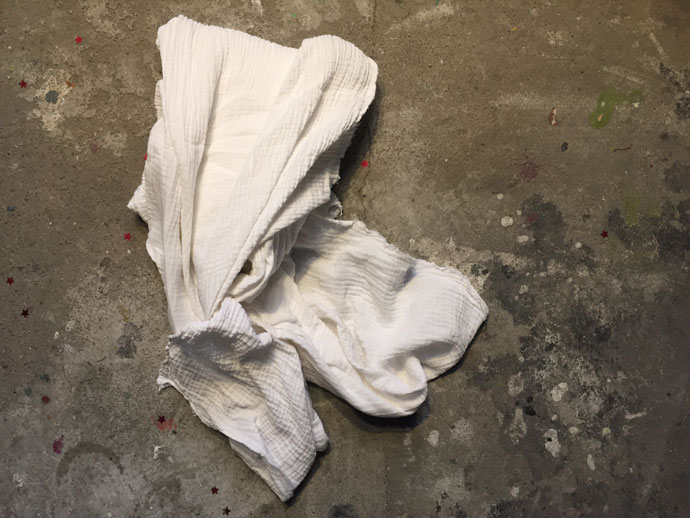
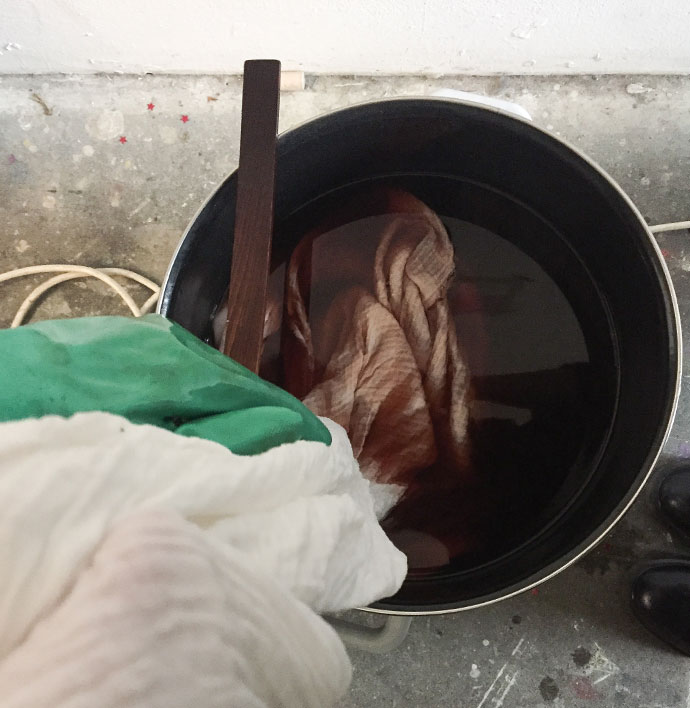
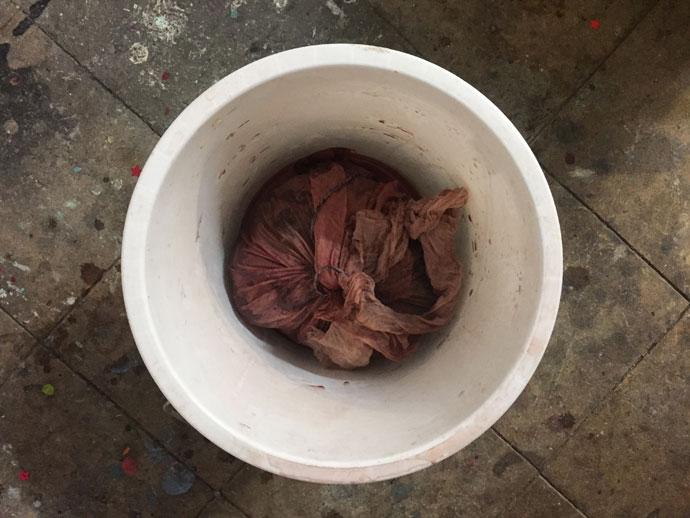
Workshops for dyeing with plants
If you live near Berlin or Stuttgart, I can recommend to leave your big pots in the cupboard and register for a workshop at still garments instead. Everything is lovingly prepared, the other participants are really interesting people and your kitchen stays clean.
MAKE SMTHNG – buy nothing
The MAKE SMTHNG week was an international event organised by Greenpeace that focused on sustainability, foodwaste, recycling and upcycling. In Berlin, in the “Ateliers am Flutgraben” in Kreuzberg, there were workshops, lectures and maker-stations with no-waste-smoothies, self-stitched animals out of socks, woven wall decoration from bicycle rims, fermentation of vegetables, a repair-café, and so on, for three days. Most likely this event will be continued in the future and I will be happy to attend it again.

Carolin Engwert is the founder of hauptstadtgarten.de a gardening blog about her allotment „Schrebergarten“ in the former East Berlin. In her articles the readers find advice for sustainable (urban) gardening, upcycling ideas, DIY tutorials, plant based recipes, a calendar with interesting „green“ events in Berlin and stories about all kinds of gardening experiments. Caro wants to encourage people to grow their own food, even if they live in a big city and even if they have only a balcony or a window sill to grow something. She loves to work with her hands and tries to explore different traditional as well as innovative techniques. With her blog, she aims to bring like-minded people together and she hopes to inspire them, to try something new every once in a while.






 We tend to forget that we not only buy products but also the packaging they come with. It is not the company paying for the packaging – it is YOU. And you then pay the local waste management facility fees to collect that packaging in your rubbish collection. So considering that a proportion of the price I pay is solely for the packaging I might as well make use of that if I can. A good example for this are mason jars. You can obviously go out and buy all the fancy mason jars but to be honest you probably get them with most of your food shopping already – if you like it or not. So make use of them as food containers, for DIY cosmetics, for candles etc. Or collect them and give them away via an online marketplace. Gift them to a kindergarten for arts and crafts, they also appreciate empty toilet paper rolls, tins, and corks. Think outside the box and you will end up with tons of great ideas on how to reuse mason jars.
We tend to forget that we not only buy products but also the packaging they come with. It is not the company paying for the packaging – it is YOU. And you then pay the local waste management facility fees to collect that packaging in your rubbish collection. So considering that a proportion of the price I pay is solely for the packaging I might as well make use of that if I can. A good example for this are mason jars. You can obviously go out and buy all the fancy mason jars but to be honest you probably get them with most of your food shopping already – if you like it or not. So make use of them as food containers, for DIY cosmetics, for candles etc. Or collect them and give them away via an online marketplace. Gift them to a kindergarten for arts and crafts, they also appreciate empty toilet paper rolls, tins, and corks. Think outside the box and you will end up with tons of great ideas on how to reuse mason jars.


 5. Using straws made of stainless steel or glass
5. Using straws made of stainless steel or glass 8. Make your own non-toxic cleaning products
8. Make your own non-toxic cleaning products
 10. DIY dishwasher powder recipe
10. DIY dishwasher powder recipe
